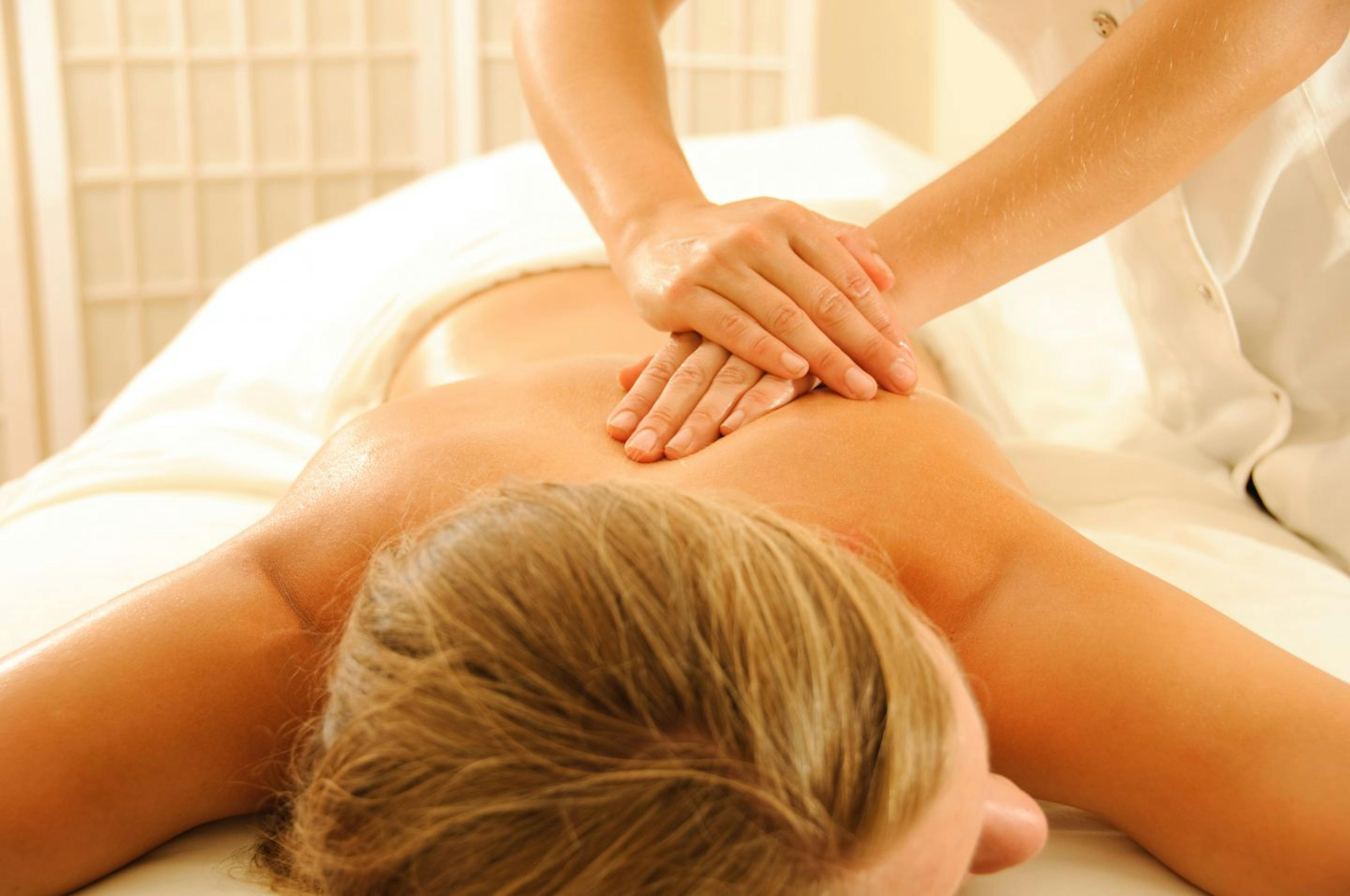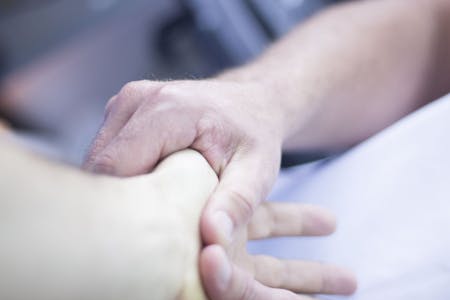-
Instrument Assisted Soft Tissue Mobilization (IASTM)
![Summit Physical Therapy] | Instrument Assisted Soft Tissue Mobilization | IASTM](https://blogsdir.imgix.net/1940/files/photos/iastm.jpg?auto=compress,format&cs=adobergb1998&w=550)
Instrument-assisted Soft Tissue Mobilization (IASTM) is a modern manual therapy technique used to treat individuals diagnosed with soft tissue abnormalities. It is performed with ergonomically designed instruments that detect and treat fascial (connective tissue) restrictions to effectively treat areas with soft tissue fibrosis (the formation of excess fibrous connective tissue in an organ or tissue in a reparative or reactive process to injury or damage - excessive scar tissue), chronic inflammation or degeneration.
Using ergonomically designed hand-held instruments, IASTM clinicians comb over the skin to find soft tissue problems. Then, the instruments are used with the appropriate amount of pressure to introduce controlled microtrauma to the area. Controlled microtrauma initiates reabsorption of fibrosis (excessive scar tissue) and facilitates healing as adhesions in the soft tissue are broken down, allowing restoration of full function.
There are several IASTM methods used by clinicians today, including Graston Technique, HawkGrips, Sound Assisted Soft Tissue Mobilization (SASTM) and Fluid Motion Soft Tissue Tools (FMST).
Graston Technique, HawkGrips, and FMST Tools use steel instruments that glide along the muscle, tendon or ligament. The application of a specified amount of pressure allows the clinician to discover the location of the scar tissue or restrictions. The instruments are then used to break up the restriction to help the patient recover range of motion and functionality.
SASTM works in a similar manner, except that the instruments locate restrictions through sound waves. Then, the tissue is treated with the appropriate amount of applied pressure. Some people have reported noticeable improvements after only one treatment. But most need 8-10 treatments over the course of a few weeks. No medications are required.
What to Expect
Prior to IASTM treatment, patients may be advised to complete five minutes of cardiovascular activity, such as riding a stationary bike or walking on a treadmill. Then, ultrasound or heat treatment may be applied to the injured area to warm up the soft tissue.
During the treatment, the clinician will use the hand-held instruments to scan, then treat the affected area using very specific, calculated massage techniques over the affected area(s). Treatment usually lasts 30 to 60 seconds over each area treated. Some discomfort may be felt during treatment, and there may be some bruising and small red dots over the area that was treated (called petechiae). If this happens, ice application to the affected area for about 15 to 20 minutes following treatment will probably ease the discomfort.
IASTM is generally done in conjunction with an exercise, stretching and strengthening program for rehabilitation to help the injured tissues heal.
Conditions Treated
IASTM is an effective treatment option for a variety of conditions including:
- Medial Epicondylitis (golfer's elbow)
- Lateral Epicondylitis (tennis elbow)
- Carpal Tunnel Syndrome
- Neck Pain
- Plantar Fascitis (foot pain)
- Rotator Cuff Tendinitis (shoulder pain)
- Patellar Tendinitis (knee pain)
- Tibialis Posterior Tendinitis
- Ankle Pain / Foot Pain / Heel Pain / Achilles Tendinitis
- DeQuervain's Syndrome
- Post-Surgical and Traumatic Scars
- Myofascial Pain and Restrictions
- Musculoskeletal Imbalances
- Chronic Joint Swelling Associated with Sprains/Strains
- Ligament Sprains
- Muscle Strains
- Non-Acute Bursitis
- Complex Regional Pain Syndrome (CRPS) / Reflex Sympathetic Dystrophy (RSD)
- Back Pain
- Trigger Finger
- Hip Pain (Replacements)
- IT Band Syndrome
- Shin Splints
- Chronic Ankle Sprains
- Acute Ankle Sprains (Advanced Technique)
- Surgical or Traumatic Scars
Many people have reported increased range of motion (ROM) and reduced pain after the first IASTM treatment. IASTM has been proven successful in reducing scar tissue problems from surgical and traumatic scar tissue and achieving great results with pain control and rejuvenating joint, ligament, tendon and muscle flexibility.
Call us today for more information on IASTM or to set up an appointment.
-
Soft Tissue Massage
Massage therapy encompasses many different techniques. In general, therapists press, rub, and otherwise manipulate the muscles and other soft tissues of the body. They most often use their hands and fingers, but may use their forearms, elbows, or feet.
Soft tissue massage includes many techniques and the type of massage given usually depends on your needs and physical condition.
- Soft tissue massage dates back thousands of years. References to massage appear in ancient writings from China, Japan, India, and Egypt. In general, massage therapists work on muscle and other soft tissue to help you feel better.
- In Swedish massage, the therapist uses long strokes, kneading, deep circular movements, vibration, and tapping.
- Sports massage combines techniques of Swedish massage and deep tissue massage to release chronic muscle tension. It’s adapted to the needs of athletes.
- Myofascial trigger point therapy focuses on trigger points—areas that are painful when pressed and are associated with pain elsewhere in the body.
- Massage therapy is sometimes done using essential oils as a form of aromatherapy.
What the Science Says About the Effectiveness of Massage
A lot of the scientific research on massage therapy is preliminary or conflicting, but much of the evidence points toward beneficial effects on pain and other symptoms associated with a number of different conditions. Much of the evidence suggests that these effects are short term and that people need to keep getting massages for the benefits to continue.
Researchers have studied the effects of massage for many conditions. Some that they have studied more extensively are the following:
Massage for Pain
- A 2008 research review and 2011 NCCIH-funded clinical trial concluded that massage may be useful for chronic low-back pain.
- Massage may help with chronic neck pain
- Massage may help with pain due to osteoarthritis of the knee
- Studies suggest that for women in labor, massage provided some pain relief and increased their satisfaction with other forms of pain relief, but the evidence isn’t strong.
Massage for Fibromyalgia
A 2010 review concluded that massage therapy may help temporarily reduce pain, fatigue, and other symptoms associated with fibromyalgia, but the evidence is not definitive. The authors noted that it’s important that the massage therapist not cause pain.
Massage for Headaches
Clinical trials on the effects of massage for headaches are preliminary and only somewhat promising.
More to Consider
- Do not use massage therapy to replace conventional care or to postpone seeing a physical therapist or doctor about a medical problem.
- If you have a medical condition and are unsure whether massage therapy would be appropriate for you, discuss your concerns with your healthcare provider.
- Tell all your health care providers about any complementary and integrative health approaches you use. Give them a full picture of what you do to manage your health. This will ensure coordinated and safe care.
Please contact us to learn more about our soft tissue massage services.
-
Myofascial Release
Myofascial pain is a painful condition that affects the fascia (connective tissue that covers the muscles). Myofascial Pain Syndrome (MPS) is chronic myofascial pain that can involve either a single muscle or a muscle group. Myofascial release (MFR) is hands-on, soft tissue therapy for the treatment of skeletal muscle immobility and pain, myofascial pain and myofascial pain syndrome.
The goal of myofascial release is to:
- Stretch and loosen the fascia,
- Release muscular shortness / tightness and relax the contracted muscles,
- Improve blood and lymphatic circulation, and
- Stimulate the stretch reflex in muscles
Treatment for Myofascial Release
Many patients seek myofascial release treatment after losing flexibility / function following an injury or if they are experiencing ongoing pain in the back, shoulder, hip or virtually any area containing soft tissue.
Myofascial release is highly effective in treating patients with a variety of diagnoses, including:
- Chronic Back Strain, Low Back Pain and Thoracic Back Pain
- Chronic Myofascial Pain / Myofascial Pain Syndrome (MPS)
- Chronic Cervical Pain
- Carpal Tunnel Syndrome
- Complex Pain Complaints
- Dizziness, Vertigo
- Fibromyalgia
- Fibrositis
- Headache / Migraine Headaches
- Plantar Fasciitis
- Post-Polio Symptoms
- Thoracic Outlet Syndrome
- Temporo-Mandibular Joint (TMJ) Dysfunction
- Whiplash
Give us a call today to learn more about our myofascial release treatments or
request an appointment


